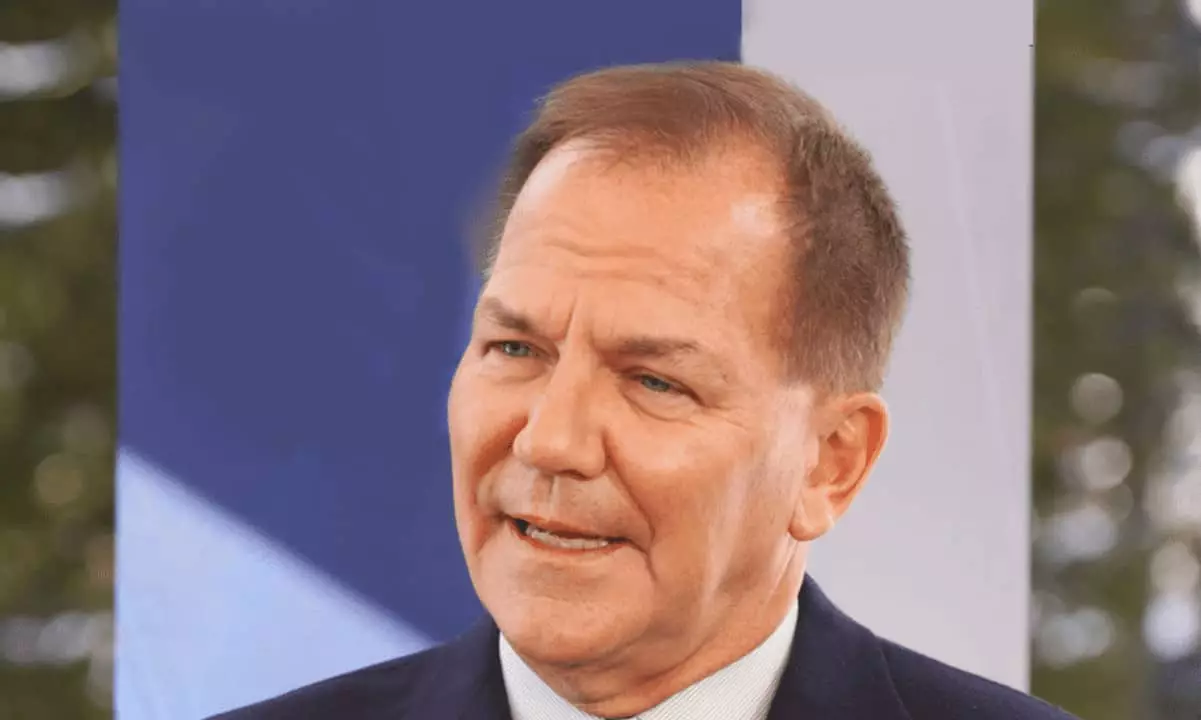The commentary on the current economic landscape is rife with concerns about inflation, particularly among high-profile investors. Paul Tudor Jones, a renowned billionaire investor, recently articulated these concerns in an interview with CNBC. On October 22, he suggested that “all roads lead to inflation,” a statement reflecting the complexities of today’s financial environment. His investment strategy, characterized by a significant focus on precious metals and cryptocurrencies, underscores his belief in tangible assets as safeguards against inflationary pressures.
Jones openly declared his investment preferences, stating that he has “probably some basket of gold, Bitcoin, commodities, and Nasdaq” while maintaining a stark absence of fixed income securities in his portfolio. This decision reveals a stark contrast to conventional wisdom, where fixed income is often seen as a bedrock of stability. In highlighting his long position in gold and Bitcoin, Jones aligns himself with a growing cohort of investors who view these assets as viable hedges against the devaluation of fiat currencies.
The market’s response to Jones’s bold assertions has been noteworthy. Cryptocurrency enthusiast Anthony Pompliano, known for his optimistic views on Bitcoin, playfully dismissed the announcement as “probably nothing!” Nevertheless, others in the investment community, such as the PiWhales account, recognized the weight of Jones’s endorsement. With over half a million followers on their platform, they emphasized that the prospect of inflation directly correlates with the increasing desirability of decentralized assets like Bitcoin.
As of October 21, Bitcoin had soared to within significant proximity of its all-time high, a noteworthy recovery from prior downturns. However, its subsequent decline to the $67,000 bracket serves as a reminder of the volatility inherent in cryptocurrency markets. Gold, on the other hand, has marked a historic milestone, trading above $2,750—reflecting a 33% increase for the year. Meanwhile, silver prices have surged by over 46%, reaching their highest valuation since 2012. This strong performance across precious metals and cryptocurrencies rings alarm bells regarding the efficacy of traditional financial instruments in the face of rising inflation.
Jones’s rationale for favoring gold and Bitcoin stems from a broader economic concern. He identified a troubling trend in the nation’s fiscal health, particularly the ballooning debt-to-GDP ratio, which currently stands at around 120% as per the Federal Reserve Bank of St. Louis. Such high ratios can hinder a nation’s responsiveness to economic shocks and elevate the risks associated with debt default, further compounding inflationary challenges.
In an attempt to mitigate these risks, Jones posits that the US may be forced into a “dovish monetary policy” paradigm, one that delicately balances stimulating growth without exacerbating inflation. The idea here is simple yet profound: as long as debt prevails, inflation is likely to follow, creating a cyclical problem that threatens economic stability. At present, the national debt eclipses $35.7 trillion and continues to rise, exacerbating existing concerns about fiscal sustainability.
Interestingly, while Jones and many investors are sounding the alarm bells, institutions such as the International Monetary Fund (IMF) present a more optimistic outlook. In its World Economic Outlook released on the same day as Jones’s interview, the IMF claimed that the “battle against inflation is largely won.” This dichotomy in perspectives raises a critical question: whose analysis should we trust when approaching investment decisions in an unpredictable economic climate?
The fluctuations in inflation rates witnessed during the COVID-19 lockdowns have since moderated, yet essential commodities continue to squeeze consumers’ wallets. Fuel, food, and energy prices – the fundamental components of everyday living – have not yet experienced the relief that broader economic metrics suggest. This discrepancy highlights the urgency for investors to remain vigilant and adapt their strategies in line with real-world conditions rather than relying on institutional rhetoric.
As Paul Tudor Jones and others assert their positions in alternative assets, the complex interplay between inflation, economic health, and personal investment strategies cannot be understated. The future may necessitate a re-evaluation of traditional investment beliefs in light of escalating debt and persistent inflationary pressures, pushing investors toward a more diversified and resilient approach.

